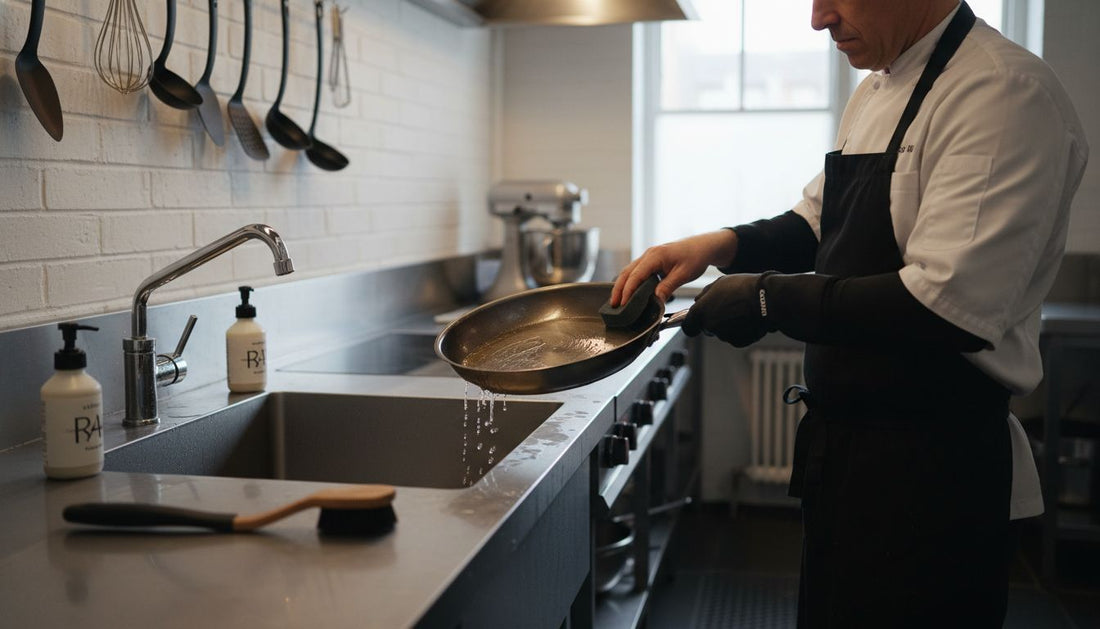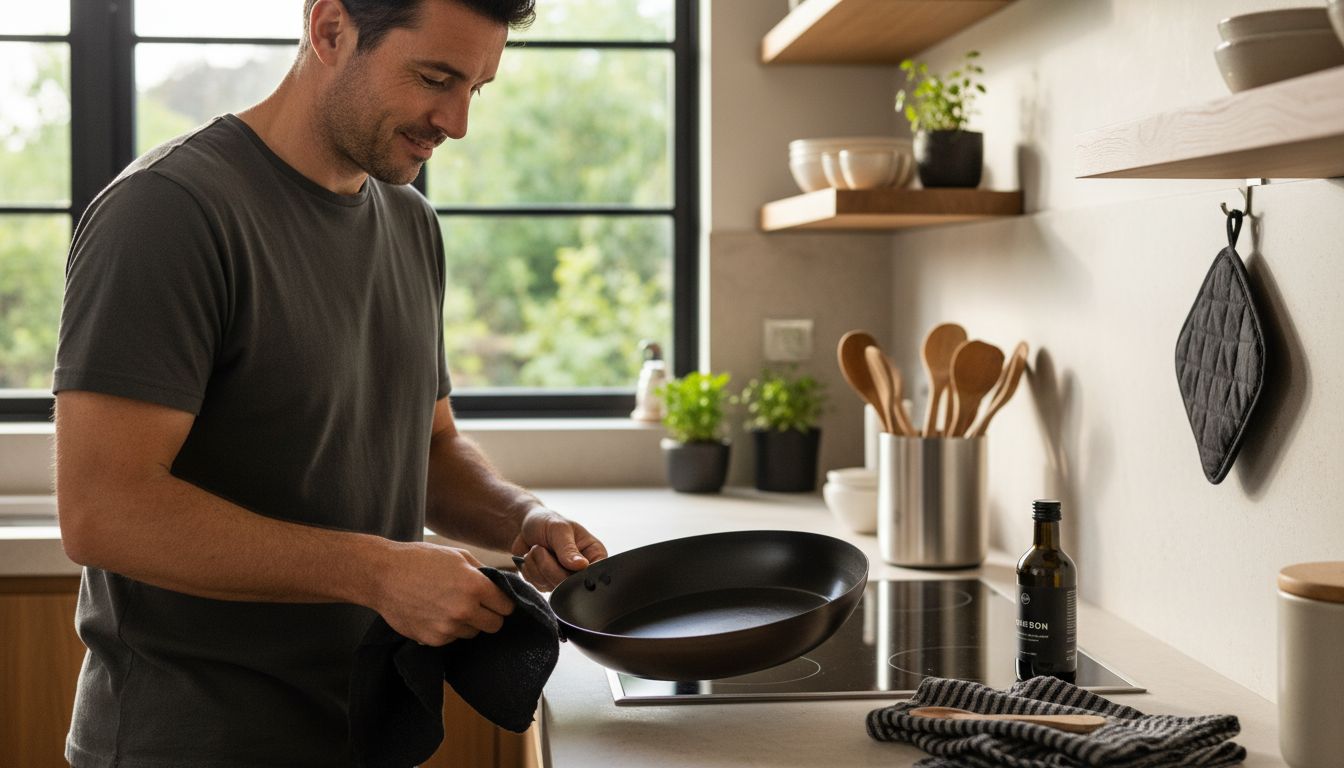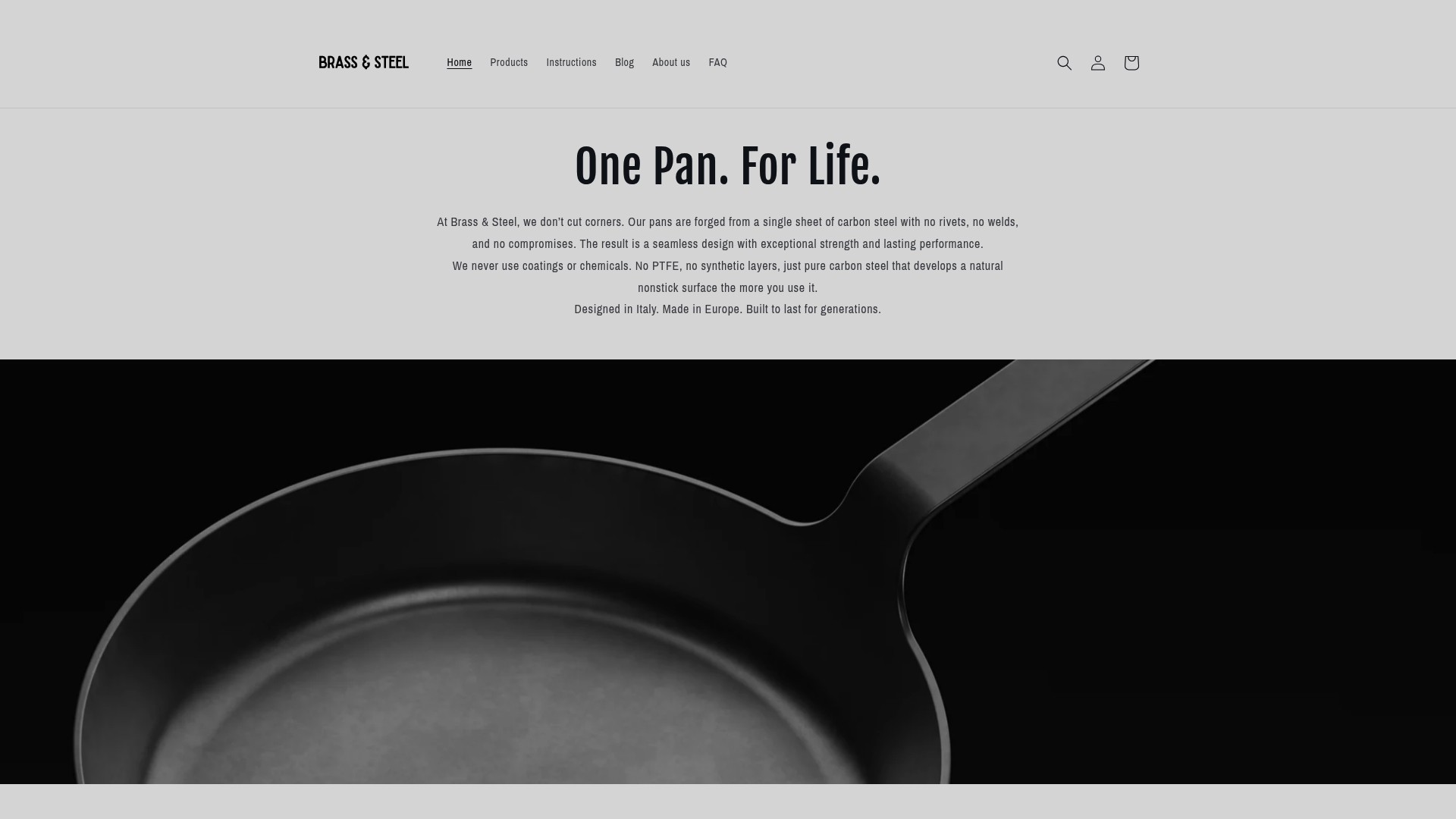
Best Practices for Carbon Steel Care: Expert Guide
Share
Did you know that a well cared for carbon steel pan can last over 100 years? This cookware is prized for its durability and natural cooking surface, but only if you maintain it with the right steps. From the moment you unbox your pan through daily upkeep and regular seasoning, each move matters for performance and longevity. Mastering these basics will help your pan evolve into a kitchen favorite that improves with every use.
Table of Contents
- Step 1: Prepare Pan for Seasoning
- Step 2: Apply and Bake Oil for a Patina
- Step 3: Maintain Daily Cleaning Routine
- Step 4: Refresh and Strengthen Seasoning
- Step 5: Inspect and Prevent Warping
Quick Summary
| Key Point | Explanation |
|---|---|
| 1. Thoroughly clean your pan first | Wash your carbon steel pan with warm water and mild soap to remove any factory coating before seasoning. |
| 2. Apply thin oil layer before baking | Use high smoke point oil and coat the pan thinly to create a protective nonstick layer through baking. |
| 3. Dry immediately to prevent rust | After washing, ensure the pan is completely dry to avoid rapid rust development. |
| 4. Maintain with gentle cleaning routine | Clean your pan while warm, dry it thoroughly, and apply a light coat of oil after every use. |
| 5. Heat gradually to avoid warping | Preheat your pan slowly and avoid sudden temperature changes to maintain its shape and integrity. |
Step 1: Prepare Pan for Seasoning
Before diving into cooking with your carbon steel pan, you need to properly prepare it for seasoning. This initial process removes any protective coating and creates the foundation for a naturally nonstick surface that will serve you for years.
Start by washing your new pan thoroughly with warm water and mild dish soap. Use a soft sponge to gently remove any factory protective coating. According to research on cookware preparation, removing this initial glaze is crucial for proper seasoning. Rinse the pan completely to ensure no soap residue remains.
After washing, dry the pan immediately and completely. Use a clean kitchen towel or paper towels to remove all moisture. Leaving water on carbon steel can cause rapid rusting, so thoroughness is key. Place the pan on a stovetop or in a warm oven to ensure it is 100% dry.
Pro Tip: Make sure your pan is completely moisture free before starting the seasoning process.
Your pan is now ready for the seasoning guide that will transform its surface into a robust cooking companion. In the next step, we will walk through applying the initial seasoning layer that protects and enhances your pan.
Step 2: Apply and Bake Oil for a Patina
With your pan cleaned and dried, it is time to create a protective seasoning layer that transforms your carbon steel pan into a naturally nonstick cooking surface. This process builds a durable patina that will improve with every meal you prepare.
According to culinary research, you will want to coat the entire pan with a very thin layer of high smoke point oil such as grapeseed, sunflower, or canola. As recommended by expert sources, spread the oil evenly using a clean paper towel or lint free cloth. Make sure to cover both the interior and exterior surfaces with an extremely thin coat that looks almost transparent.
Preheat your oven to a high temperature between 450 and 500 degrees Fahrenheit. Place the pan upside down on the middle rack to allow any excess oil to drip away. According to seasoning guidelines, you will want to bake the pan for approximately 30 to 60 minutes. The oil will polymerise during this process, creating a hard protective layer.
Pro Tip: Choose oils with high smoke points to prevent burning and ensure a smooth seasoning process.
You might need to repeat this process two or three times to build a robust initial patina.
Each layer will make your pan more nonstick and resistant to rust. For more detailed guidance, check out our step by step seasoning guide. Next, we will explore how to maintain this protective layer for long lasting cooking performance.
Step 3: Maintain Daily Cleaning Routine
Keeping your carbon steel pan in top condition requires a simple yet consistent cleaning approach. Your daily maintenance routine will protect the seasoning you have carefully built and ensure your pan remains a reliable cooking companion for years to come.
After cooking, clean your pan while it is still warm using hot running water. According to culinary research, a soft sponge or gentle scrub brush works best for removing food residue. Avoid using harsh detergents or abrasive scouring pads that could damage the protective patina you have developed.
Thoroughly dry the pan immediately after washing. Water left on carbon steel can cause rapid rusting, so use a clean kitchen towel to remove all moisture completely. Some cooks prefer to briefly place the pan on a warm stovetop to ensure it is 100% dry.

Pro Tip: Always dry your pan immediately and thoroughly to prevent rust formation.
Finish your cleaning routine by applying a very light coat of cooking oil. This thin layer will help maintain the nonstick surface and provide additional protection against moisture. For more detailed insights, check out our carbon steel seasoning checklist to keep your pan in perfect condition. Moving forward, we will explore how to address potential issues like sticky surfaces or minor rust spots.
Step 4: Refresh and Strengthen Seasoning
Over time, your carbon steel pan’s seasoning can become dull or uneven. Knowing how to refresh and strengthen the protective patina will keep your pan performing like new and prevent potential cooking issues.
Start by thoroughly cleaning your pan to remove any food residue or built up grime. Once clean, apply a very thin layer of high smoke point oil such as grapeseed or canola. According to culinary research, you will want to coat both the interior and exterior surfaces with an almost transparent layer of oil.
Preheat your oven to a high temperature between 450 and 500 degrees Fahrenheit. As recommended by expert sources, place the pan upside down on the middle rack to allow excess oil to drip away. You will want to bake the pan for approximately 30 to 60 minutes to allow the oil to polymerise and create a hard protective layer.
Pro Tip: Repeat the seasoning process two or three times for a more robust protective layer.
After the pan cools down, it will have a refreshed and strengthened seasoning. Each additional layer builds more protection and improves the nonstick qualities. If you want more detailed guidance on maintaining your pan, check out our guide on re seasoning carbon steel. Your pan is now ready for many more delicious meals to come.
Step 5: Inspect and Prevent Warping
Warping can turn your beloved carbon steel pan from a kitchen hero into a frustrating cooking companion. Understanding how to prevent and inspect for potential warping will help you maintain the integrity and performance of your cookware.
According to culinary experts, the key to preventing warping starts with careful heating techniques. As research suggests, heat your pan gradually and evenly. Begin warming the pan from the outer edges and slowly move towards the center. This method helps distribute heat uniformly and reduces the risk of structural stress on the metal.
Inspect your pan regularly for any signs of distortion. Look for uneven surfaces when the pan is sitting flat on your stovetop or countertop. Small warps can develop from sudden temperature changes or aggressive heating. Always allow your pan to cool naturally and avoid placing a hot pan directly under cold water.
Pro Tip: Always preheat your pan slowly and avoid extreme temperature fluctuations.
If you notice slight warping, you might be able to gently reshape the pan while it is warm. However, significant warping typically means the pan needs professional assessment or replacement. For more comprehensive guidance on maintaining your cookware, explore our carbon steel pan maintenance guide. Proper care will ensure your pan remains a reliable cooking tool for years to come.
Here’s a comparison of the essential steps for caring for a carbon steel pan:
| Step | Purpose | Key Actions |
|---|---|---|
| Prepare for Seasoning | Remove coating, prevent rust | Wash with soap Dry thoroughly |
| Apply/Bake Oil for Patina | Build nonstick, protective layer | Coat with oil Bake at high heat |
| Daily Cleaning Routine | Maintain seasoning, prevent rust | Clean while warm Dry immediately Re-oil |
| Refresh Seasoning | Strengthen patina, restore surface | Reapply oil Bake again |
| Inspect & Prevent Warping | Retain pan shape, ensure longevity | Heat gradually Check for warping |
Elevate Your Carbon Steel Pan Experience with Brass & Steel
Caring for your carbon steel pan is key to unlocking its full potential as a durable and naturally nonstick kitchen companion. This expert guide highlights the importance of proper seasoning, maintaining a protective patina, and preventing warping—all challenges that serious cooks face when striving for a pan that performs flawlessly every time. If you seek a pan crafted for longevity and high performance, explore the Carbon Steel Collection | Brass&Steel where each pan is forged from a single steel sheet for unmatched durability and cooking precision.

Discover the joy of cooking with a pan that embraces your care routine and rewards you with excellent heat retention and a naturally nonstick surface. Visit Brass & Steel now to find your heirloom-quality carbon steel sauté pan, and start seasoning and maintaining it with confidence using our step-by-step resources. Your next delicious meal is waiting for cookware that matches your passion and expertise.
Frequently Asked Questions
How do I prepare my carbon steel pan for seasoning?
To prepare your carbon steel pan for seasoning, wash it thoroughly with warm water and mild dish soap to remove any factory coating. Dry the pan immediately to prevent rust, then proceed to apply the seasoning layer.
What oil should I use for seasoning my carbon steel pan?
Use a high smoke point oil such as grapeseed, sunflower, or canola oil for seasoning your carbon steel pan. Coat the pan with a very thin layer, ensuring it is almost transparent before baking it in the oven at a high temperature.
How can I maintain my carbon steel pan to prevent rusting?
To prevent rusting, always dry your carbon steel pan thoroughly after washing it and apply a very light coat of cooking oil. Make this part of your daily cleaning routine to keep moisture at bay and extend the life of the seasoning.
How often should I refresh the seasoning on my carbon steel pan?
You should refresh the seasoning on your carbon steel pan as needed, typically when the surface appears dull or uneven. Aim to apply a new thin layer of oil and bake it every few months for optimal performance.
What are the signs of warping in a carbon steel pan and how can I prevent it?
Signs of warping include uneven surfaces when the pan is placed flat on a surface. To prevent warping, heat your pan gradually and avoid sudden temperature changes; always allow it to cool naturally after use.